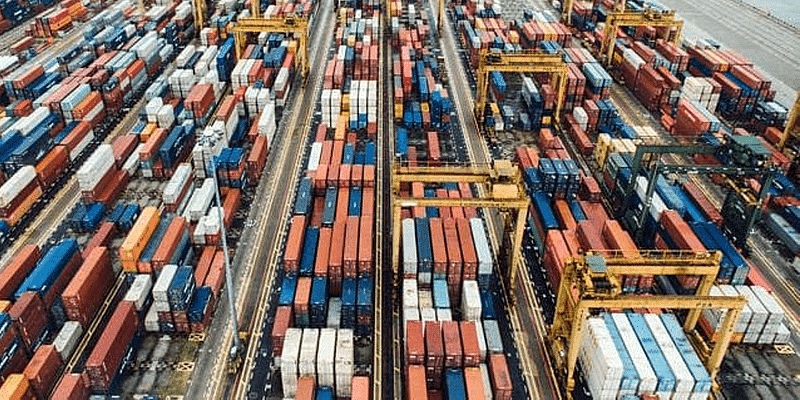The World Bank on Tuesday slashed India’s GDP to 6.3% as against an estimate of 6.6% in fiscal 2023-24, citing high borrowing costs and slower income growth as among reasons behind the downgrade.
“In India, South Asia’s largest economy, high borrowing costs and slower income growth are expected to dampen consumption and lower growth to 6.3% in FY 2023/24,” the World Bank said in a report for South Asia released on Tuesday ahead of the annual spring meeting of the International Monetary Fund and the World Bank.
“The main reason for the downgrade of the forecast is weak consumption, and also tightening of fiscal policies, and especially tightening of the current expenditure by the government. Domestic consumption is held back by the tighter fiscal situation,” Hans Timmer, World Bank Chief Economist for South Asia, told reporters during a news conference here.
In general, the situation in India is better than in many of the other countries in South Asia, he noted. The situation in the financial sector is healthier than seen in many of the other countries. Observing that the banks in India are in good shape and they have improved after the pandemic, Timmer said that there is healthy credit supply in the economy and private investment is relatively strong compared to recent years.
The main challenge in India, the World Bank economist said, is that only a small part of the potential in India is being utilised.
“In India, female labour force participation has dropped below 20%. There is also no sign that the informal sector is becoming more productive or becoming smaller. So, there is still a huge structural agenda in India to make growth more inclusive to increase participation,” he said.
“There’s also still a reform agenda needed to increase private investment from abroad, especially in the services sector,” he said, adding that there is also the challenge of climate change in India to prepare for the changing climate and to play its role in mitigating global emissions.
“But in the short run, (India has a) healthier economy than in the rest of South Asia,” Timmer said.
All countries in the region except Bhutan have downgraded their forecasts, the World Bank said in its report.
Growth in Pakistan, which is still reeling from the impacts of last year’s catastrophic floods and facing supply chain disruptions, deteriorating investor confidence, and higher borrowing and input costs, is projected to drop to 0.4% this year, assuming agreement on an IMF programme is reached, it said.
In Sri Lanka, GDP is expected to contract by 4.3% this year reflecting the lasting impact of the macro-debt crisis, with future growth prospects – following last month’s IMF programme approval – heavily dependent on debt restructuring and structural reforms, the bank said.
The resumption of tourism and migration has supported growth in Maldives and Nepal. But high external debt and tightened global financial conditions pose risks to Maldives’ fiscal and external accounts, and in Nepal, external shocks, domestic import restrictions, and monetary tightening are expected to hamper growth, said the report.
“South Asia’s economies have been scarred by a combination of extreme shocks over the past three years, and the recovery remains incomplete,” said Martin Raiser, World Bank Vice President for South Asia.
“Countries should use the opportunity of lower energy prices and improving trade balances to move away from ad hoc measures, such as fuel subsidies and import restrictions implemented to address these shocks, and focus on reforms needed to build resilience and boost medium-term growth,” it said.
According to the report, inflation in South Asia is set to fall to 8.9% this year, and to below seven% in 2024. However, weaker currencies and delayed domestic price adjustments are contributing to a slower than anticipated decline in inflation. Elevated global and domestic food prices are contributing to greater food insecurity for South Asia’s poor who spend a larger share of income on food, it said.
“South Asia’s stark socio-economic divides are both unfair and inefficient. They keep talented individuals from contributing to society, reduce incentives to invest in human capital, and derail long-term economic growth,” said Hans Timmer, World Bank Chief Economist for South Asia.
“Addressing these structural issues is vital to ensuring the region can achieve its full potential,” he added.










